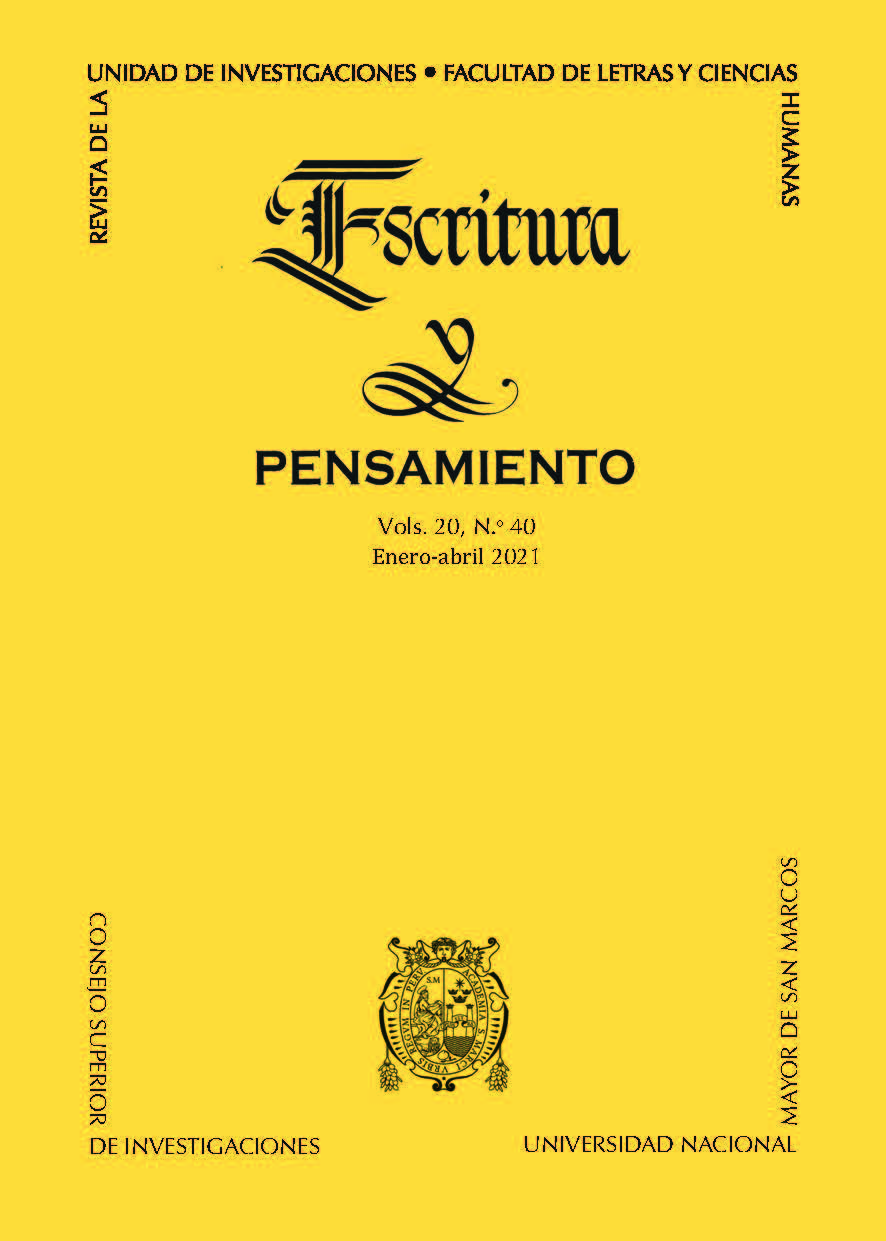Vienrich, Adolfo. Tarmap Pacha-Huaray. Azucenas Quechuas. (Nuna-shimi Chihuanhuai). Lima: Pakarina Ediciones, 2020, pp. 286.
DOI:
https://doi.org/10.15381/escrypensam.v20i40.20073Abstract
The first years of the twentieth century insert us into a complex network of relationships established among the intellectual community. The structure of the Peruvian field of cultural productions was cemented by a hegemonic elite and a series of precepts that allowed them to maintain that position. By 1905, the predominance of the field was found in the group of the 900, led by José de la Riva Agüero, who, with the defense and publication of his bachelor's thesis as a book, Carácter de la literatura del Perú independiente, placed Peruvian literature in a hispanist trend. In that sense, prior to the Conquest, he points out, there was no true literature, but only literary conditions that expanded, possibly, until the beginning of the Republic. From these dominant postulates in the literary space, movements of resistance and destabilization arise, impregnated with an anarchist breath, like the one initiated by some pariahs in the same year of the hispanophile apogee.
Downloads
Published
Issue
Section
License
Copyright (c) 2021 Alex Hurtado Lazo

This work is licensed under a Creative Commons Attribution 4.0 International License.
AUTHORS RETAIN THEIR RIGHTS:
a. The authors retain their trademark and patent rights, and also over any process or procedure described in the article.
b. The authors retain the right to share, copy, distribute, execute and publicly communicate the article published in the Escritura y Pensamiento (for example, place it in an institutional repository or publish as part a book), with acknowledgment of its initial publication by Escritura y Pensamiento.
c. Authors retain the right to make a subsequent publication of their work, to use the article or any part of it (for example: a compilation of their work, lecture notes, thesis, or for a book), provided that they indicate the source of publication (authors of the work, journal, volume, number and date).













